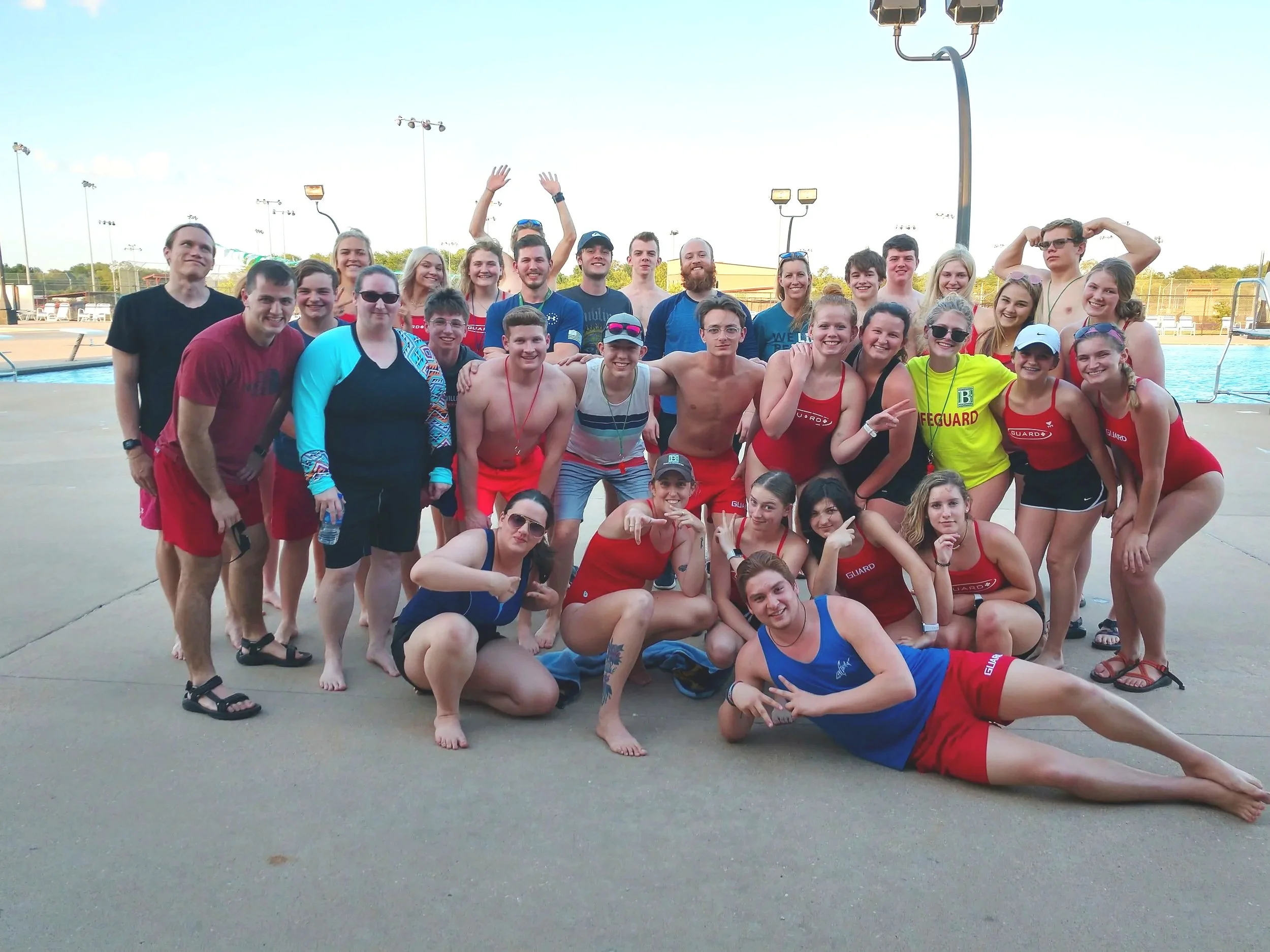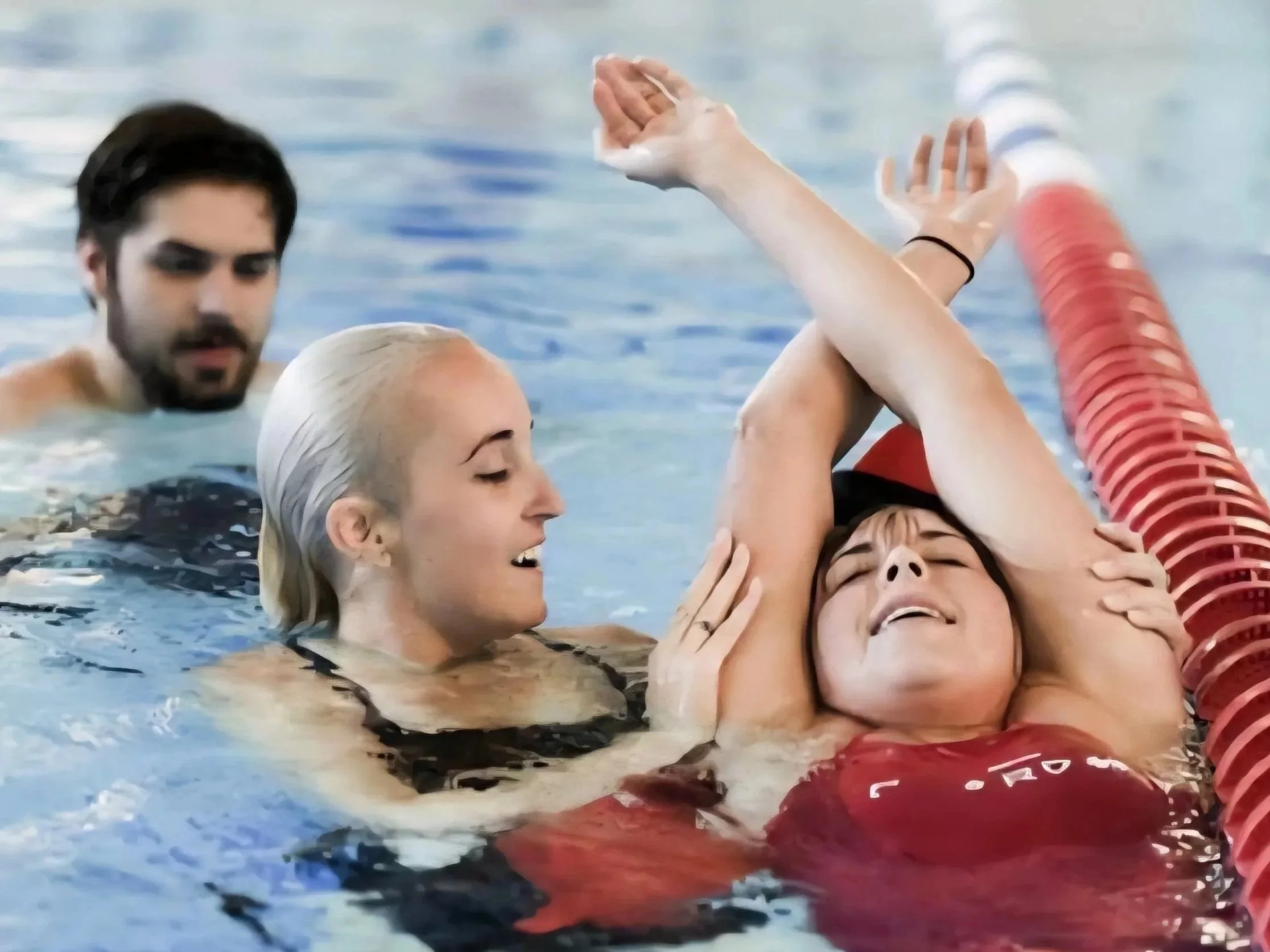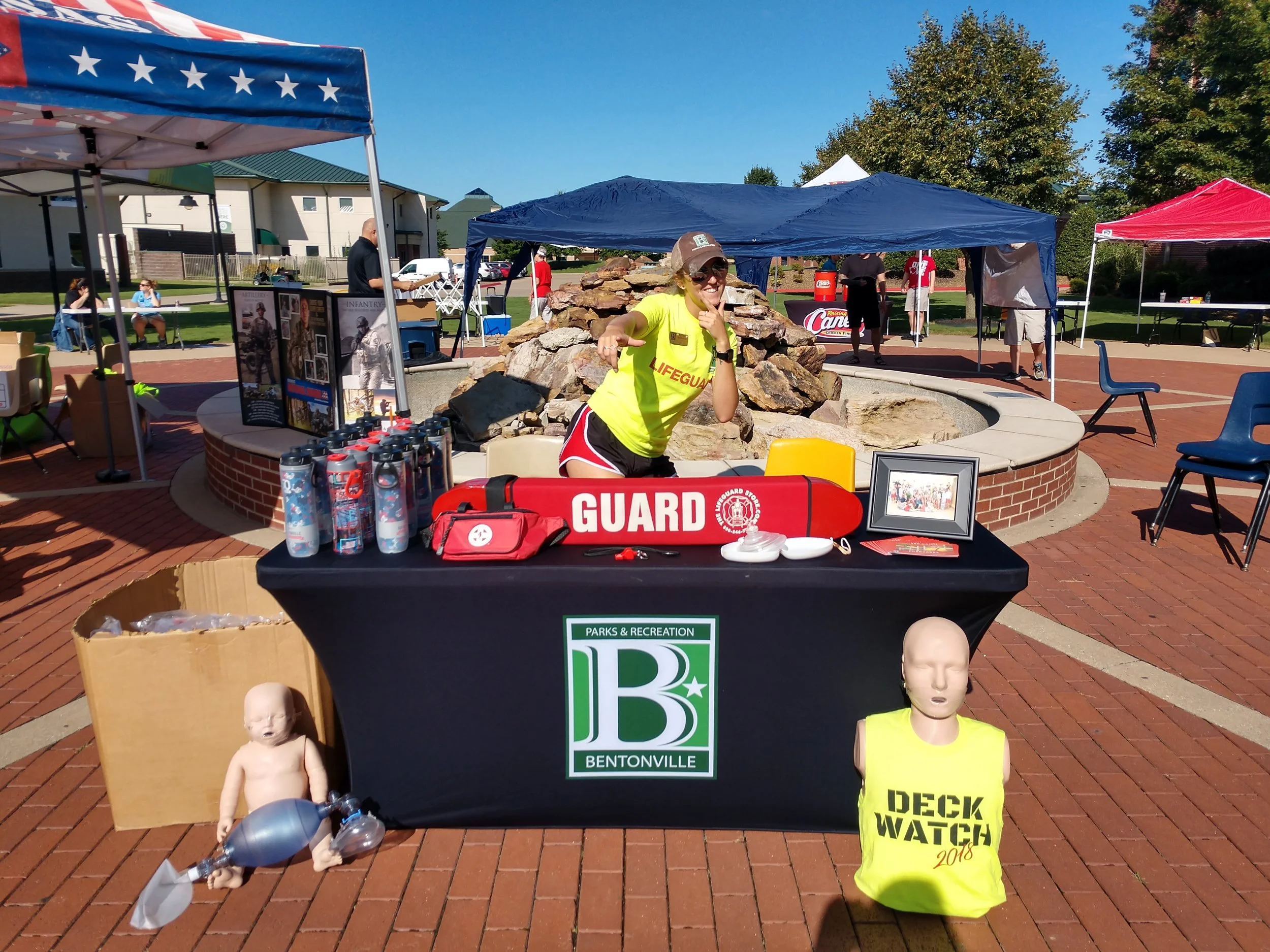
Aquatic Supervisor
Bentonville Parks and Recreation
August 2016 - February 2021
Managed year-round aquatic operations across three distinct public portfolios, implementing unified standards while adapting to facility-specific needs.
Designed a nationally recognized staff development model for 60+ team members, elevating industry standards for training and safety.
Drafted and implemented emergency action plan protocols, ensuring compliance with safety regulations, risk mitigation, and local authorities.
Managed complex budget allocation across multiple departments and needs, ensuring maximum community impact and responsible taxpayer spending.
Acted as Course Director for the Bentonville Half Marathon and other races in the Run Bentonville series.
Established partnerships and acted as liaison with other local government departments and external agencies.
Training and Certifications
Multiple certifications go along with safely operating a pool. Additionally, Kelsey has been a Red Cross Instructor for over ten years, holding the following certifications at points in her tenure:
Certified Pool Operator
Aquatic Facility Operator
Lifeguard Instructor
Water Safety Instructor Trainer
Basic Life Support (EMT)
Community Engagement
Throughout the years, Kelsey has acted as an ambassador for BPR, attending and engaging in community events such as:
Kansas City Marathon Expo
National Recreation and Park Association Annual Conference
AOAP Aquatic Conference
Career Days at the University of Arkansas and NWACC
Race Series
Kelsey was able to bring her talent for organization, strategy, and contingency planning to the Run Bentonville Race series. She was involved in the operation and execution over multiple years for the following races:
Bentonville Half Marathon
Square 2 Square
RBRS 5k Events: Sweethearts, Frosty, Glow Run, Worst Race Ever, Irish, Goblin Run
TriFest for MS
The SEPA Model & BED Time
In 2018, Kelsey created the “SEPA” training model for the aquatics team. This model was comprised of four key formats of training needed for continuous staff development: Structured, Engagement, Passive, and Active.
Structured Training focused on refining specific life-saving knowledge and demonstrating excellence in the skills related to Emergency Response. The core vessel used to train on lifeguarding skills was a training program she created later in 2018 and dubbed “BED Time” (Better Every Day).
Each day that a team member came to work, they expected to run one lifeguard-related training drill and complete a required round of physical conditioning before the end of their shift. These drills ranged from performing CPR on a fake collapsed adult in the locker room, to practicing extraction of an unconscious victim in deep water, all the way to a full-team walkthrough of one of the eleven Emergency Action Plans (tornado warning, fire drill, active shooter, etc.)
The team of talented and dedicated lifeguards followed this simple mantra during skill drills:
“Train to the standard, test to the objective.”


